THE INFLUENCE INDEX
Cataloguing Barcelona Car-Parks through the prism of land use.
CONCEPT
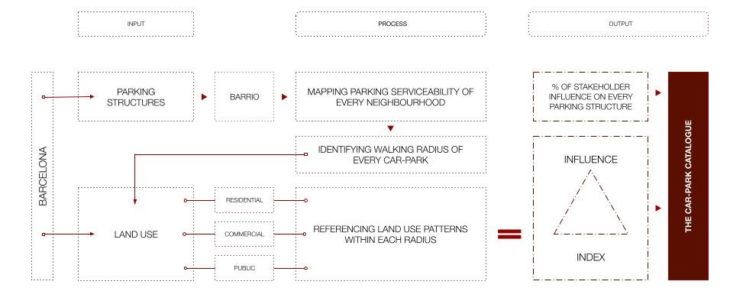
The project aims to catalogue the relationship between all parking structures in Barcelona and the land use of their respective locations. The primary objective is to visualize the relationship that existing land use patterns have on the car-parks within the city. The study is an attempt at developing a graph illustrating “Influence Index” that can be catalogued for all car-parks at the city level. The study aspires to inform better decision makings regarding the use and servicing of these car-parks presently and(or) aid in developing transformation strategies for the future. It is an attempt to systemize the existing stakeholders that function within walking distances from parking lots within each barrio of Barcelona.
STAGE 1: THE CAR PARK HISTOGRAM
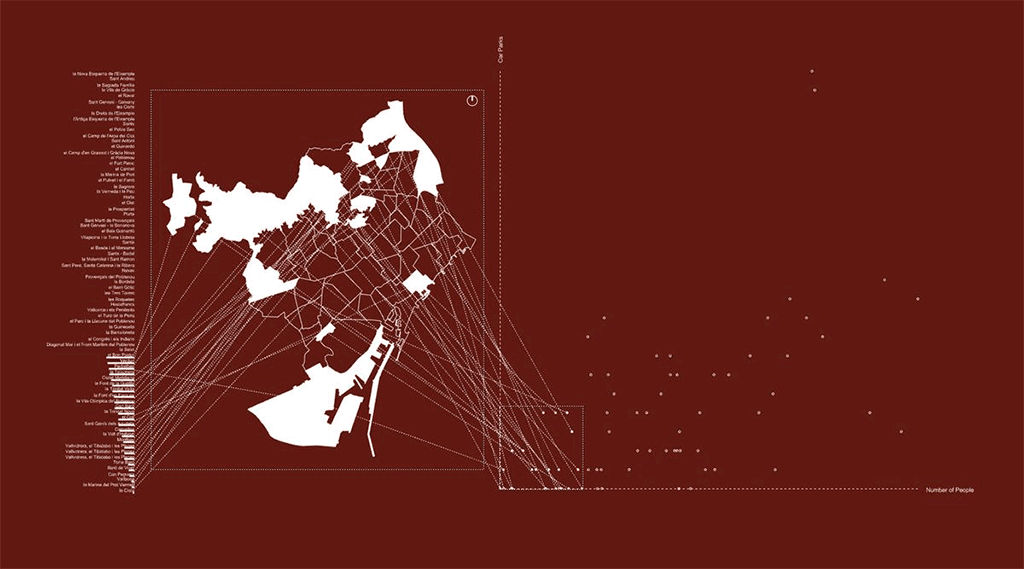
The first stage of the project analyzed the car-park concentration within each barrio of Barcelona in reference to the total population of the barrio. Populated areas are concentrated in Barcelona at micro levels. In reference to this, the city has a fair distribution of car-parks across each barrio. There is a concentration of barrio’s at the center of the graph that tells us that there are more than adequate parking in these areas. And these car-parks represent a great opportunity for the development of an array of diverse functions. The second step of the analysis consists of the formulation of a connectivity index. It takes into account the existing land-use patterns of the city and cross-references it to the walking radius around each car-park. This index allows one to understand how much influence the surrounding typology have over these car-parks, a key aspect for the right continuation of the urban planning, infrastructure zoning and policy regulations.
STAGE 2: THE INFLUENCE INDEX
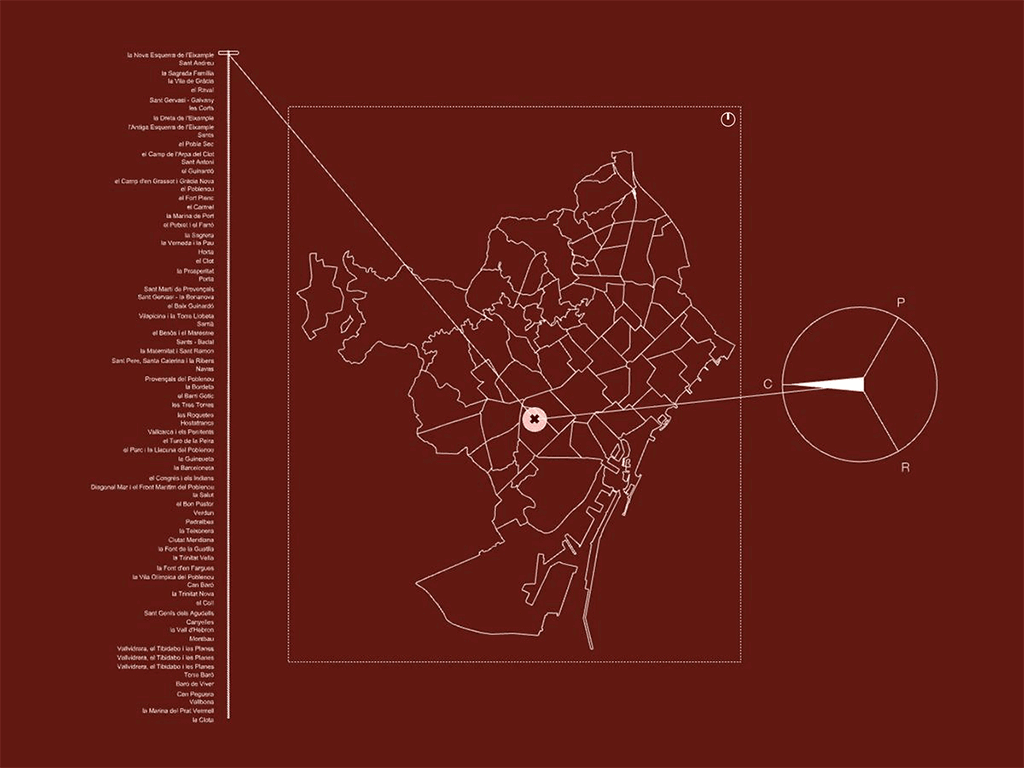
The creation of proper data sets was the key step in developing this project further. The functioning of the tool is based on two key aspects. Both these aspects are potentially strategies that transformational spatial planning deals with. The first way is to identify parking lots according to the histogram of barrios. Once you select the car-park you wish to explore, the tool will communicate, the context, the walking distance and the physical influence of surrounding typology. The graph divided into 3 equal portions of a circle tells you the concentration of residential, commercial and public spaces within walking distance of each car-park. Strategists and planners can compare the results and indexes to other ones within the same (or another) barrio. The second way is to start from the influence index. So, if you want to know which are the car-parks with the higher connectivity with commercial activities, you only need to look at the catalogue of output and select an index and the algorithm will show you the exact location of the car-park.
CONCLUSION
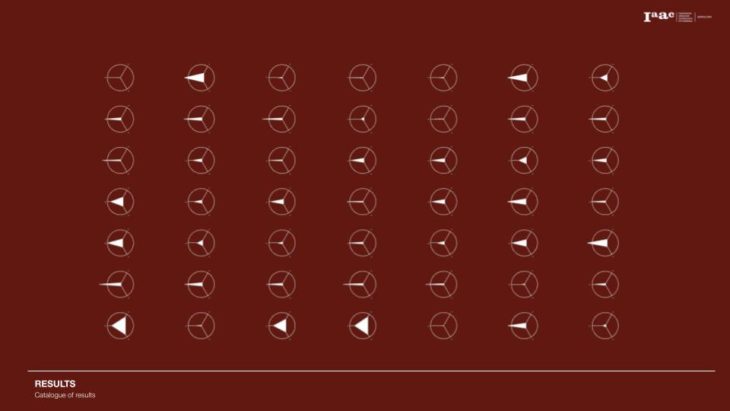
The tool can be used to visualize the existing information. A clear representation of factors that can influence upcoming transformations, zoning regulations and policies. The holistic study serves to be a small element in taking a circulate economy and systems building approach to the question of using, re-using and(or) repurposing the car-park typology. A detailed analysis further cross-referenced to the municipal framework of Barcelona can bring new insights that drive better design and planning decision makings. In this scenario, all possibilities have distinct responses that sometimes do not necessarily communicate a similar picture within each barrio. However, through data analysis and broadening the land use classification, the study can visualize and document correlations that can help curate conscious design decision making and more holistically meet the spatial transformation needs of the future.
PSEUDOCODE
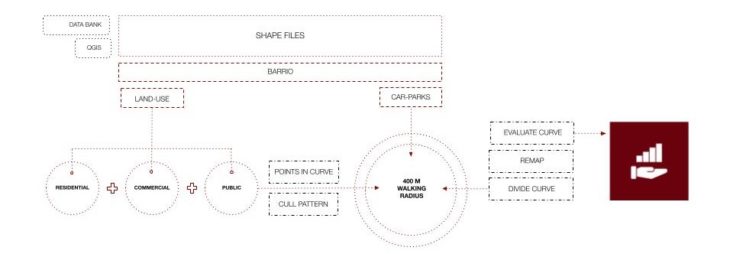
DATA SOURCE
Open Data BCN
The Influence Index is a project of IAAC, Institute for Advanced Architecture of Catalonia developed in the Master in City & Technology 2021/22 by Student: Parshav Sheth and Faculty: Eugenio Bettucchi and Iacopo Neri